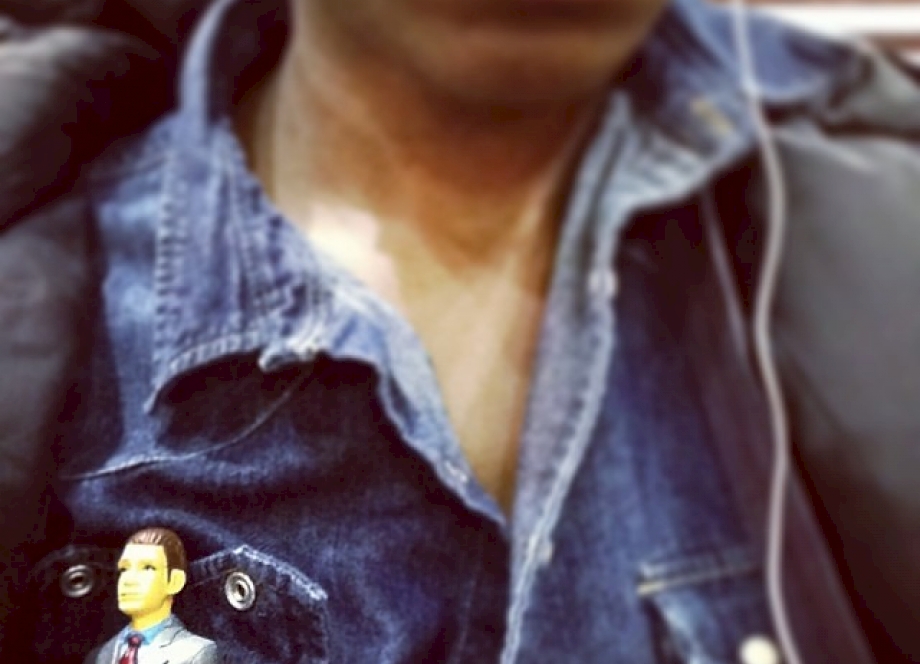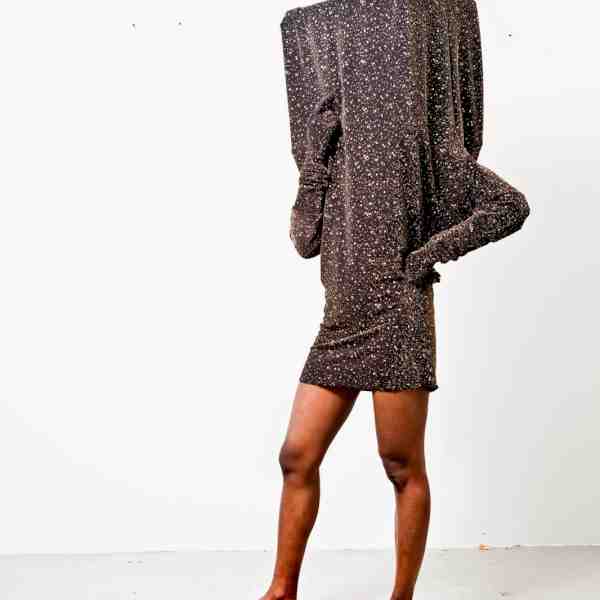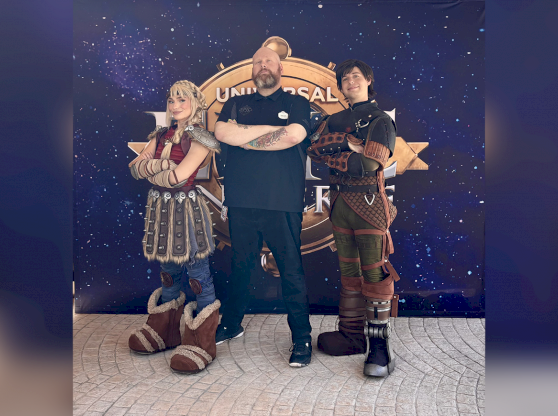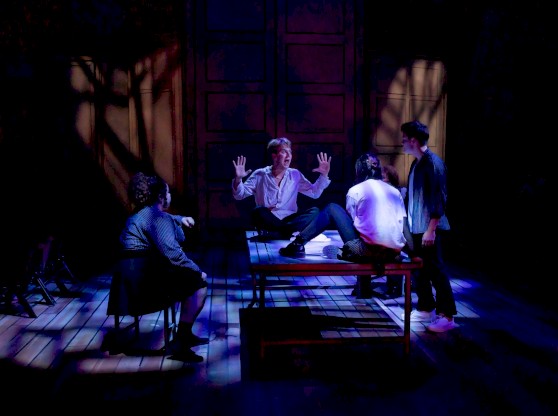During my seven months in Gainesville (and in the United States), I’ve had conversations with a select group of studio artists. The following interview is a reflection of that authentic space. Kenya (Robinson) and I met for the first time via Skype. The conversation was intended to let our community know more about Kenya’s work before her visit to the School of Art + Art History. (Robinson), who identifies as an “international southerner trying to get in grown folks’ business,” became a fine artist through a series of coincidental moments. Without having an undergraduate degree she was accepted to the Yale University School of Art. And, without being a Spanish speaker, there’s something about her that resonates simpatico with Latin American people. This is what she wants to explore with the project ¿Preguntas? There are no fabricated obstacles in (Robinson’s) artistic practice, but there are many challenges that become material for her creative work.
MD: You live and work in New York but you are actually from Gainesville. How do you feel about coming back, now as a visiting artist to UF?
K(R): It feels great for my ego! Actually, when I moved to New York, I was like, “Oh, I should totally revisit finishing my degree.” But then I applied [to UF] and I didn’t get accepted. Now I think it was a matter of the universe broadening my scope, because as much as I loved growing up in Gainesville it didn’t seem like the place to discover my life’s passion. With that said, coming back always feels great! I’m doubly excited about the opportunity to participate in this community through presenting a lecture, working on my own projects, contributing to the classroom discourse and being a studio visitor. Working with Lisa Iglesias, Trent Williams, Oliver Klicker, Kristin Sarette, the staff at the Fine Arts library, among others, I feel like we are challenging what visiting artist experiences could look like.
MD: One could say that your work deals with issues about race, gender and sexuality. What is your goal as an artist in those terms?
K(R): I’m not interested in race. I’m interested in the relationship between black people and white people in America. I’m interested in privilege as a plastic material that we can all use. I also want to elevate the vernacular. Terms like “gender” and “race” and “class” have become euphemistic instead of descriptive. In an actual context, “gender” is a code word for woman, “race” usually means black and “class” refers to a certain percentage of consumption – I think it’s a way to complicate the conversation unnecessarily. I strive to be more accurate with words; it’s not about correcting people, but a means of clarifying our social condition. My work is about addressing gender in terms of femininity and masculinity – that’s why I carry a #WHITEMANINMYPOCKET. In that sense I want to use my work (and words) to accurately portray an artistic practice that uses false dichotomies to address the whole.
MD: Where were you before going to New York and where are you now as an artist?
K(R): Before I came to New York I was in LA for three years. While I was still in Gainesville I helped a friend with an application to a fashion design/product development program in California. As her roommate, I peeped at the day-to-day of her work in the apparel industry and came to see those efforts as an actual profession. Intrigued by the possibilities, I enrolled in the apparel design and production program at Los Angeles Trade Technical College and I got an associate’s degree (this was before Schwarzenegger).
As design students we were required to have sketchbooks. The sketchbooks might include anything from fabric swatches to drawings and magazine clips. These sketchbooks quickly became more than assignments, they were an inspiration for my future studio practice. Over time, the things that I added to my sketchbook started to change. They became more complex ideas, often outside the realm of fashion. I shared them aloud, wondering “wouldn’t it be cool if someone created…?” A friend suggested that I attempt one of my concepts as an installation piece. At the time I didn’t even know what an installation was! He mentioned further that I should apply for funding, and after a few visits to my local library, I learned about a grant offered through the Brooklyn Arts Council. I applied, secured funding for my first exhibition at the Museum of Contemporary African Diasporan Arts, and the rest is history. Although I’ve always made work, I think of this process as the beginning of my art career. It was like I got a new language to work with.
MD: In 2011 you were the subject of the short form documentary I Have The Right by Jenny Lam. Central to this film is the notion that a “sense of entitlement” is generally not supported in the black community. Can you tell me more about how you have been developing this healthy sense of entitlement in your work since then?
K(R): I think it’s a privilege to make the life you want. I decided to become an artist because this path fulfills me, and most people don’t allow themselves the privilege of fulfillment. I’ve worked hard to privilege my own aspirations above outside expectations, or constructed obligations, or fear – so that´s number one. In that sense, my application to Yale was an art piece constructed of entitlement. On paper, I didn´t have the minimum requirement for graduate school (an undergraduate degree), but I had other tools: curiosity, tenacity, passion and skill. Those aspects were significant enough to combat my fear of rejection so that I could at least apply. Yale was also a space where I could witness this kind of entitled privilege very close up. I felt I had a right to that experience. It was empowering to be undeterred by something that was really, in my eyes, just a made up thing; those gate-keeping constructions that fail to connect to the actual work of an artist.
It’s my job as an individual, and particularly as an artist, to not be fooled by these made up obstacles. Because there are real obstacles in life that you have to deal with, I’m determined to move from the fake to the real ones. #WHITEMANINMYPOCKET refers to that. I’ve put him in situations where he exists as an object but also a visual symbol that is meant to interact with the viewers’ gaze. I feel I have the right to do it. It’s totally fake because most of time he’s not even in my pocket! But I enjoy using the privilege that he embodies as a material to prompt a real interaction. And that interaction is what I use to create the next scenario.
CHEEKY LaSHAE started as a reactionary project because in grad school I felt like I was being forced into a box. I imagined that if I’m going to be put in a box then I want to be in control of how it looks in a physical sense. I’m going to put a box on my head and that’s the box I’m going to occupy. It’s going to be a glamorous and imposing box. It’s going to be a haute box, a jack-in-the-box; a black box, that if opened, will tell you all information leading up to impact. And I’m going to privilege the black female body as an artistic model, because, why the hell not? CHEEKY is a point of departure, a default that everything else will reference and I will clarify this position by playing it through a performative sculpture.
MD: How important is your audience during your creative process?
K(R): I’m constantly attempting to blur the line between audience and performer, viewer and artist. My studio practice would exist regardless of whether or not I show. But my art practice does not exist without audience. Without an audience/viewer it’s therapy or a hobby. I mean I’ve been making things for a long time. This making has always been a part of my life, but it wasn’t until I had an audience to push back against the practice, that it became art. This relationship has inspired me to elevate the vernacular.
MD: What inspires you every day?
K(R): Instagram in the morning, of course! But my preeminent inspiration is books – of different kinds and in different languages. I’m determined – maybe you can help me with this – to learn Spanish because I cannot tell you how many times, if I’m alone, people come up to me to speaking Spanish in the states. I never thought of blackness, en español. But duh! Blackness is global. I could go to so many countries in Latin America and find a place there, phenotypically. Colonialism is real!
I have this idea that I wanted to work with young people (2– 5 years old) – early childhood is another really huge point of inspiration – on a project called “¿Preguntas?”. Through this experience, I could explore the untold histories of self-emancipation in Spanish Florida, abutting the prevailing narratives of northbound escapes. Free black settlements in Florida are stunningly revealed in census records after the Civil War and in historical figures that were multiracial (hashtag Oseola). I think that expanding my language repertoire, I can question cultural histories that are somehow a part of my heritage and respond to the Spanish speakers that unexpectedly include me in their conversations.
MD: Ha sido un honor conversar contigo Kenya (Robinson). Espero que quien lea este diálogo lo disfrute tanto como yo. ¡Muchas gracias!
Kenya (Robinson) will be a visiting artist at UF March 9-13, 2015. She will be giving a lecture on Thursday, March 12th at 6:30pm in Fine Arts Building B, Lecture Hall 105. She will also be providing graduate student studio visits, creating an edition of lithographs with printmaking students, collaborating with School of Theatre and Dance Assistant Professor Trent D. Williams, Jr. Kenya (Robinson’s) visit was made possible by the SA+AH Visiting Artist and Scholars Committee and the Marston Fund, the Samuel Proctor Oral History Program, and the UF Center for the Humanities and the Public Sphere (Rothman Endowment).





